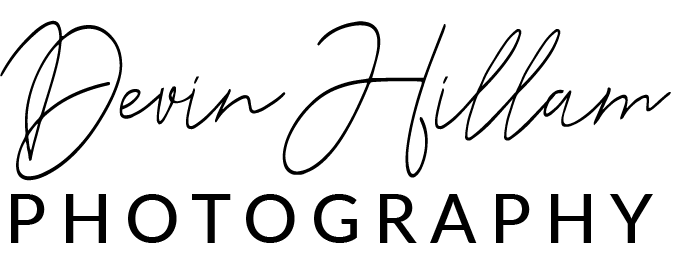Q&A: Film vs Digital Photography
If you’ve ever dabbled in photography, chances are you’ve used a digital camera or your smartphone to capture your shots. But what if you’re curious about film photography—the classic art form that once dominated the photographic world? While digital photography offers unparalleled convenience, film offers an entirely different experience, aesthetic, and creative process. In this post, we’ll explore the key aspects of film photography, its advantages, and how it compares to digital.
What Is Film Photography?
Film photography uses a chemical process to capture images on photosensitive material (usually silver halide crystals) loaded into a film camera. Unlike digital photography, which relies on electronic sensors to capture and store images as digital files, film records images physically on the film itself. These images can then be developed in a darkroom or sent to a lab for processing.
Why Try Film Photography?
1. Superior Dynamic Range and Details
Film excels at capturing subtle details in shadows and highlights, offering a higher dynamic range than most digital cameras. This means film images often feel richer and more natural.
2. Creative Freedom in Processing
Processing film is a hands-on, artistic experience. Unlike digital editing, which often involves tweaking sliders on a screen, working in a darkroom allows you to interact directly with your images, influencing everything from contrast to exposure.
3. A Slower, More Thoughtful Process
With a limited number of exposures on each roll of film, you’re encouraged to think carefully about your composition, lighting, and framing before pressing the shutter. This can make you a more intentional photographer.
4. Timeless Equipment
Film cameras are durable and don’t become obsolete like digital cameras. Many vintage film cameras are still functional after decades of use, making them a long-term investment.
5. Unique Aesthetic
Film has a distinctive look that digital simulations can’t fully replicate. Iconic film stocks like Velvia or Provia provide unparalleled color consistency and character, making film images stand out.
Film Photography in the Modern Age
Thanks to modern photo labs, you can now digitize your film photos by scanning them into high-resolution digital files. This hybrid approach combines the best of both worlds: the timeless charm of film with the convenience of digital sharing and editing.
Is Film Right for You?
Film photography isn’t just about capturing images—it’s about slowing down, engaging with your craft, and embracing a timeless process. If you’re willing to invest the time and effort, shooting film can deepen your appreciation for photography and improve your skills. Whether you’re inspired by the classic aesthetic, intrigued by the creative control, or simply want to experience a different side of photography, film offers a rewarding journey.
Film may no longer dominate the industry, but its enduring appeal proves its unique value. So, dust off that vintage camera, grab a roll of film, and dive into the art of “writing with light.” Who knows—you might just fall in love with the magic of analog!
Why do I prefer film? Or do I?
I grew up shooting with film, first with my mom’s old Kodak disc camera and then to an Olympus zoom point-and-shoot, and then finally, Canon SLRs. I spent high school in our darkroom (ah, that chemical smell and magic of seeing a photo paper appear out of seemingly nothing). But then along came digital.
In 2007, I switched to digital and never thought I’d look back - There weren’t waiting times to get photos developed. There weren’t worries of missed photos and opportunities. And man!, the cameras and their lenses were soooo good. All of that was amazing to me until it wasn’t.
In 2021, I got a Canon R5, a brilliant piece of technology with incredible animal and human eye focusing, a fast live viewfinder, and a camera body that was much lighter than my digital single lens reflex cameras with their bulky mirrors but by early 2023, the magic wore off and I realized that to me, I’d lost the things about photography that I enjoyed.
I did enjoy having to slow down to get my photo.
I did enjoy sometimes not knowing if my photos turned out (this is different even between mirrorless cameras and DSLRs where in mirrorless cameras, the photo result shows in the viewfinder).
I did enjoy the manual buttons and controls of cameras and not options that hid in digital menus on screens.
A couple of years later, I’m fully engaged with film/analog photography but I still shoot digital (even though my Instagram pages probably don’t show it). I shoot digital for fast moving things where milliseconds matter and there won’t be repeated - wildlife photography, concerts, sports, etc. butfor nearly everything else, I reach for my film camera. There’s something magical about the hands-on process of analog photography: turning dials, pressing physical buttons, loading and unloading rolls of film, and advancing the lever after each shot. It’s not just photography—it’s a ritual.
One of my favorite aspects of shooting film is the delayed gratification. I often wait weeks, sometimes even months, before sending a batch of film in for development and scanning. When those scans finally arrive in my inbox, it’s like Christmas morning. Each photo feels fresh, surprising, and full of nostalgia. I love rediscovering the moments I captured, moments I may have even forgotten about.
Of course, this is just my personal experience, and your journey might look entirely different. Some people prefer the immediacy and convenience of digital photography, while others are drawn to the deliberate, artistic process of film. The beauty of photography is that it’s a vast and inclusive world, big enough to celebrate all preferences and styles.


